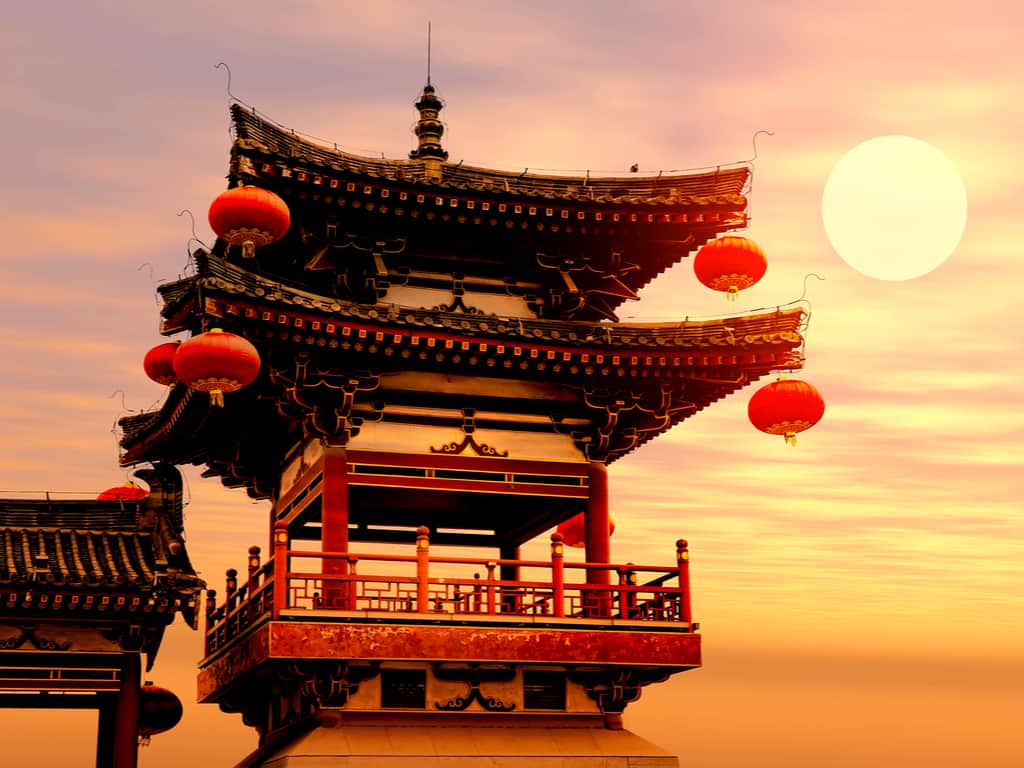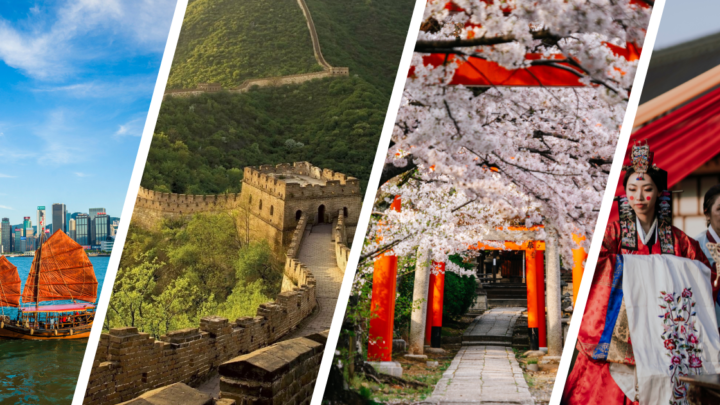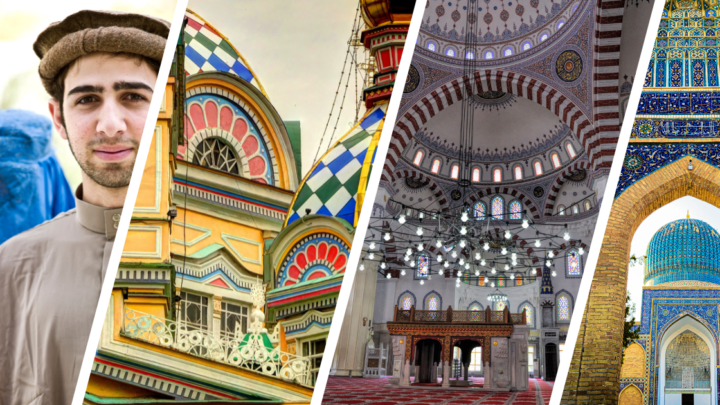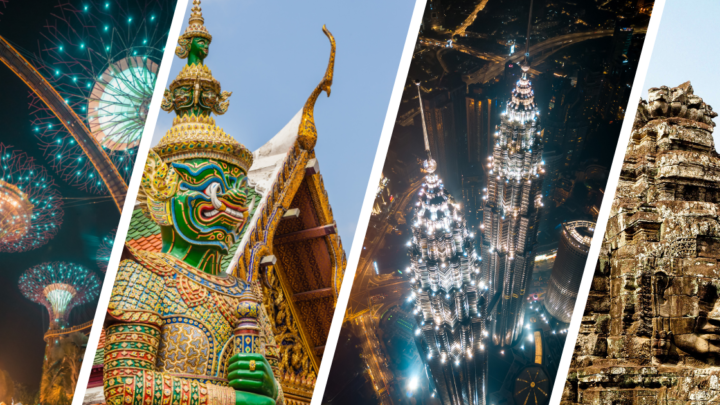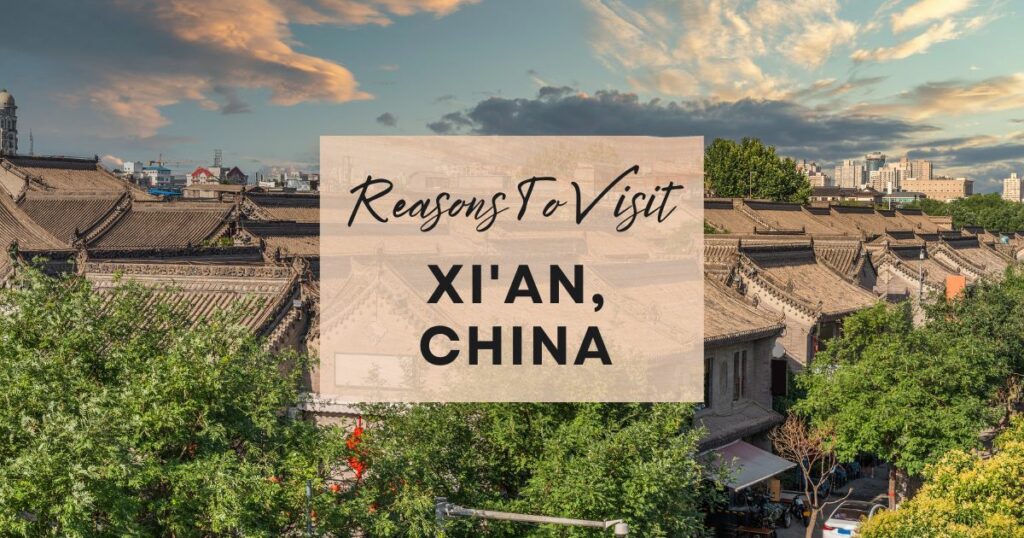Making travel arrangements to visit Xi’an, China? Explore the top activities to do and sights to see in Xi’an, China, to make the most of your time there. Get the most out of your vacation by exploring the best things to do in Xi’an, China, and the best places to visit in Xi’an, China, below. Wondrous Drifter is a Web 3.0 startup in the tourism industry that aims to disrupt the industry as a whole by utilizing Web 3.0 technologies.
Table Of Content
Bell Tower
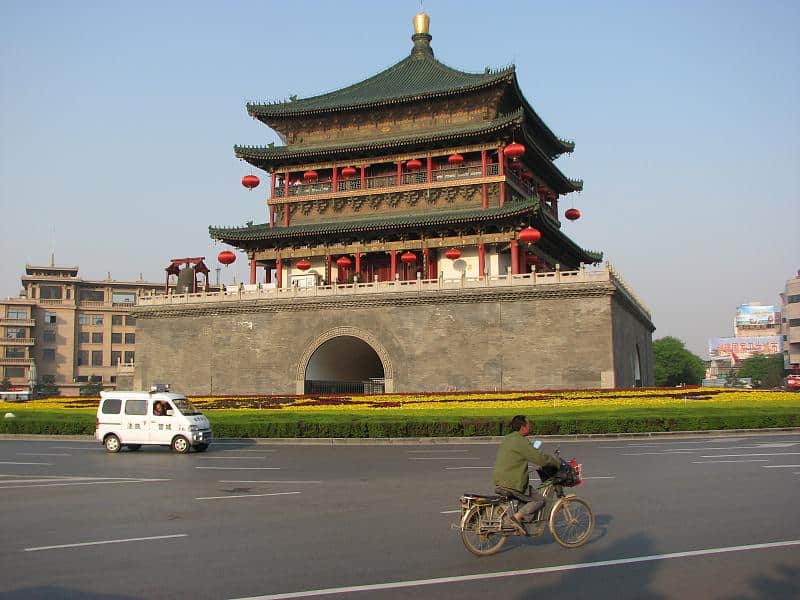
If you are looking for one of the best things to see at night in Xi’an, the Belltower would surely not disappoint.
It was built originally in 1384 by then Emperor Zhu Yuanzhang near the Drum Tower as a military command center.
Then it was relocated as the city expanded and used to mark time.
They built the present-day tower in 1582. It was moved about 1,000 meters east and used all of the original features, except the base.
The tower was crafted out of wood, green-glazed tiles, and has touches of gold.
The 36-meter structure is the largest and the best-preserved of its kind in China.
Inside the tower, visitors are welcome to climb the spiral staircases while appreciating the engravings from the Ming and Qing dynasties and see the porcelain museum, bronze bells, and stone chimes.
If the visitors decide to climb to the top, they will have a great view of Xi’an’s four cardinal streets.
The tower’s original bell, the Jingyun Bell, was relocated in the city from the Jinglong Temple in the early Ming Dynasty but then moved to the Xian Stone Steles Museum.
Today, a six-tonne replica has taken its place and chimes ten minutes, multiple times a day.
Now is your time to experience the ringing of the bells.
Address: Xi’an, Shaanxi, China
Drum Tower
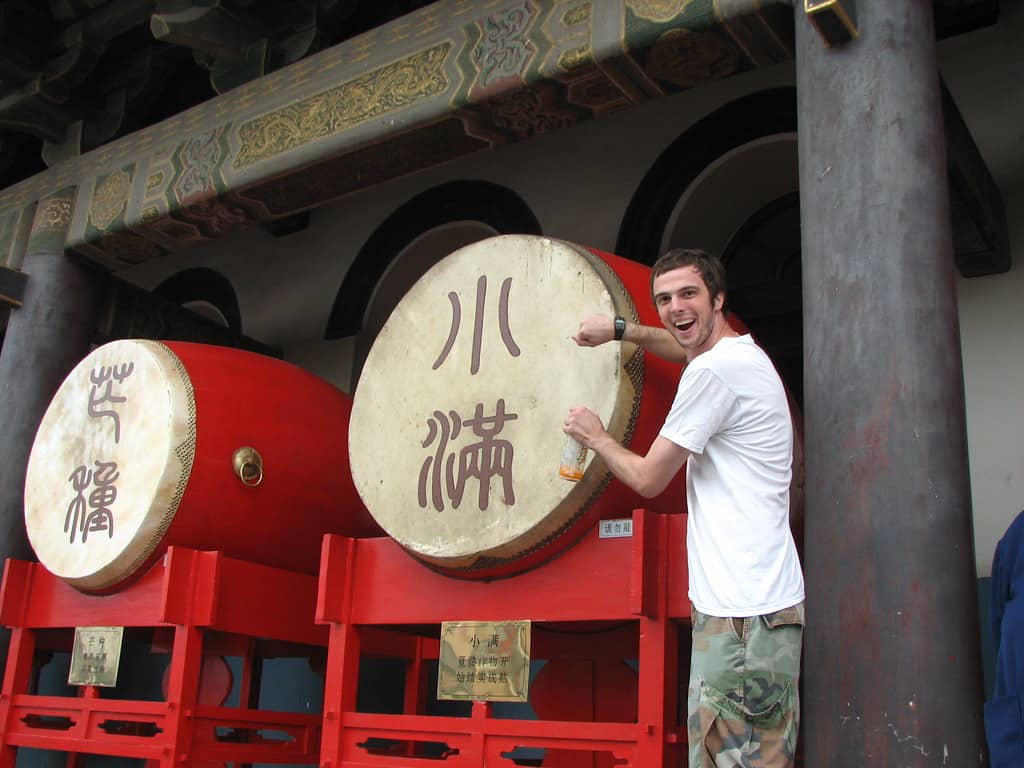
Hear the world’s biggest Drum at Xi’an’s Drum Tower.
Named after the enormous drum inside the tower. In fact, the drum beats every day at dusk to mark a day’s end.
They initially built the tower in 1380 during the reign of the Emperor Hongwu of the Ming Dynasty.
It is located northwest of the Bell Tower of Xi’an, across the Bell and Drum Tower Square. They have coined the towers the “sister buildings” or “morning bell and dark drum.”
In ancient China, especially during the Yuan Dynasty, the drums were used to signal running time during emergencies.
Their musical performances, as well as the opportunity to hear the morning bell and nighttime drumming, are exciting experiences for tourists.
Climb the tower if you want to get a great view of the city.
You should add the Drum Tower to your list of must-sees on your next Xi’an trip.
Address: Xi’an, Shaanxi, China
Giant Wild Goose Pagoda
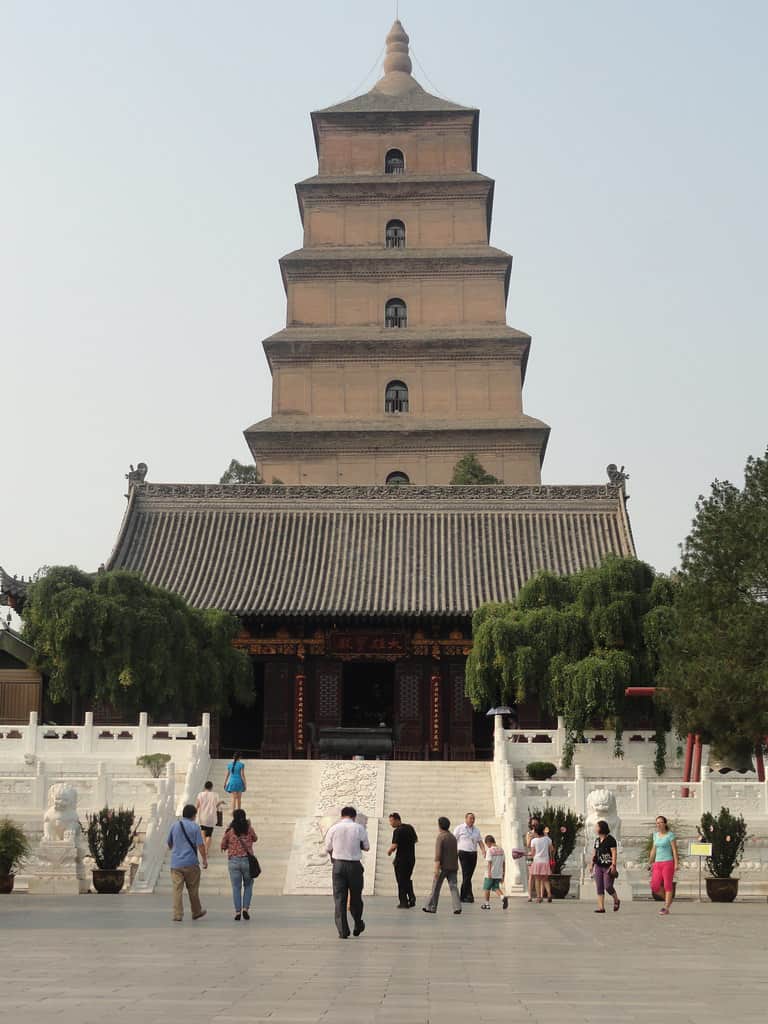
No, it is not a big wild goose.
The Giant Wild Goose Pagoda is a well-known landmark in Xi’an.
This square pavilion pagoda, built in 652 as a venue to study Buddhist scripture, once had five levels and stood 60 meters tall. Empress Wu Zetian added two more floors in 704, and the brick exterior was restored during the Ming dynasty.
The Buddhist pagoda is inside the Da Ci’en Temple complex, built to honor Emperor Li Zhi’s mother.
In the 7th century, it was primarily used as a storage space for Buddhist figures arriving from India.
Inside the pagoda, different Buddha statues are engraved on the walls. Visitors could climb the stairs to see views of the city on all four sides of each floor.
The Giant Wild Goose Pagoda is considered an AAAA Tourist Attraction and a National Key Cultural Relic Preserve.
Additionally, in 2014, along with other sites along the ancient Silk Road, it was added to the World Heritage List.
Now is the time to check out the Giant Wild Goose Pagoda.
Address: Giant Wild Goose Pagoda, China
Great Mosque of Xi’an
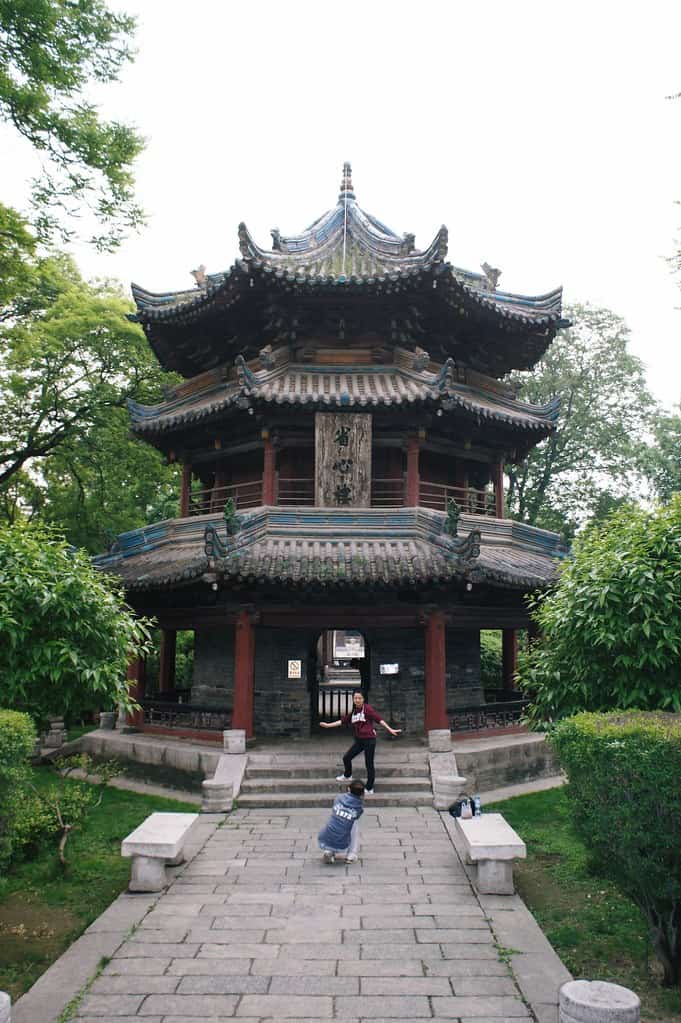
A place to see a mix of cultures, the Great Mosque of Xi’an is a place to visit.
China’s Great Mosque in Xi’an is regarded as one of the country’s most ancient and well-preserved Islamic mosques.
Built in 742BC around Tang Dynasty, it features a unique mix of Muslim and Chinese architectural styles.
The Mosque faces westward towards Mecca; the Xi’an Great Mosque showcases memorial walls, pagoda-filled gardens, and the arches of the Arabs.
Visit the four courtyards for yourself. The first courtyard has a wooden arch that rises 9 meters tall and is decorated in 17th-century tilework.
The engraved calligraphy on the stone arch in the second courtyard is well-known, as is the one in the third courtyard.
Its vast blue-roofed prayer hall in the fourth courtyard is a prominent attraction.
Lovely magnolias bloom throughout the year at the Mosque, making it a pleasant place to visit at any time of the year.
When in Xi’an, don’t forget to visit the Great Mosque.
Address: Great Mosque of Xi’an, China
Huaqing Palace
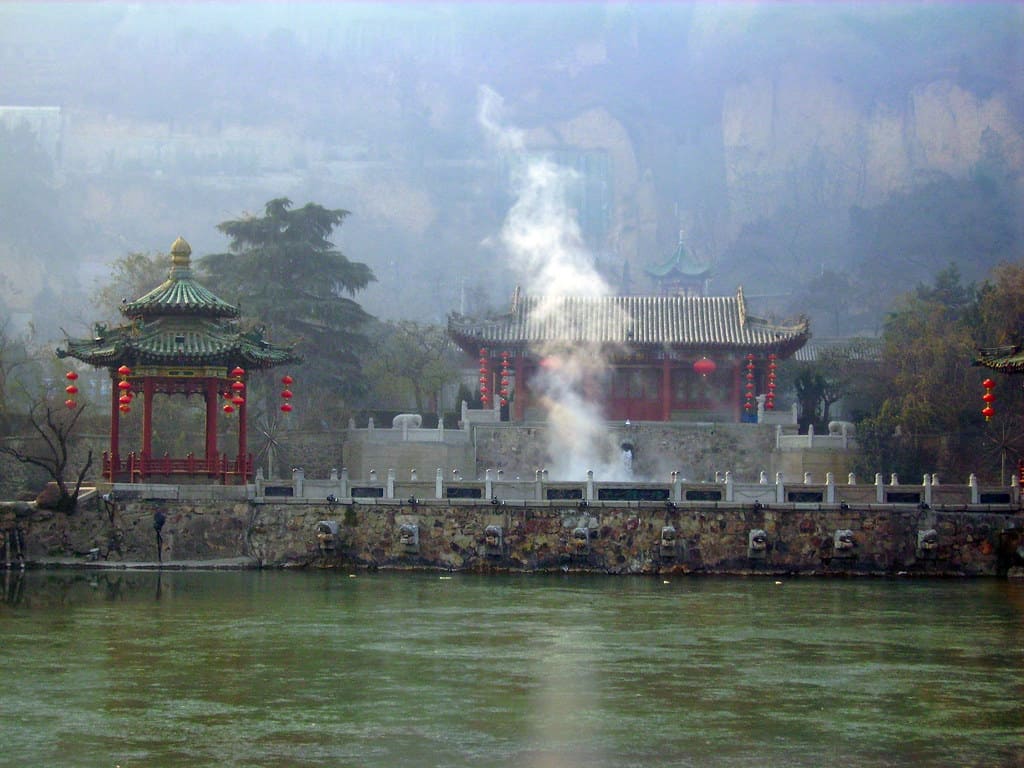
Want to see a palace and hot spring all in one?
The Huaqing Palace, a.k.a the Huaquing Hot Springs, was built at the foot of Mount Li by King You during the Zhou’s Western Dynasty (1046 B.C.-771 B.C.).
You can take your time exploring the palace’s endless cultural relics, landscaped gardens, and more than 100 hot pools varying in different shapes and sizes.
The palace’s hot spring has been known for the water’s mineral-rich properties, and it even has healing powers for various skin ailments like rheumatism, arthritis, and muscular pain.
Huaqing Pool is also famous for the love story of Tang Emperor Xuanzong and his concubine Yang Yuhuan.
The most famed royal theater in all of China is the Pear Garden in Huaqing Pool.
They said that Yang Yuhuan and Emperor Xuanzong, his concubine created many different dances and tunes.
Yet, the best-known song has been long-lost, and it is called: Ni Shang Yu Yi Qu.
Check out the Huaquing Palace on your next visit to Xi’an.
Address: Huaquing Palace, China
Hanyanling Museum
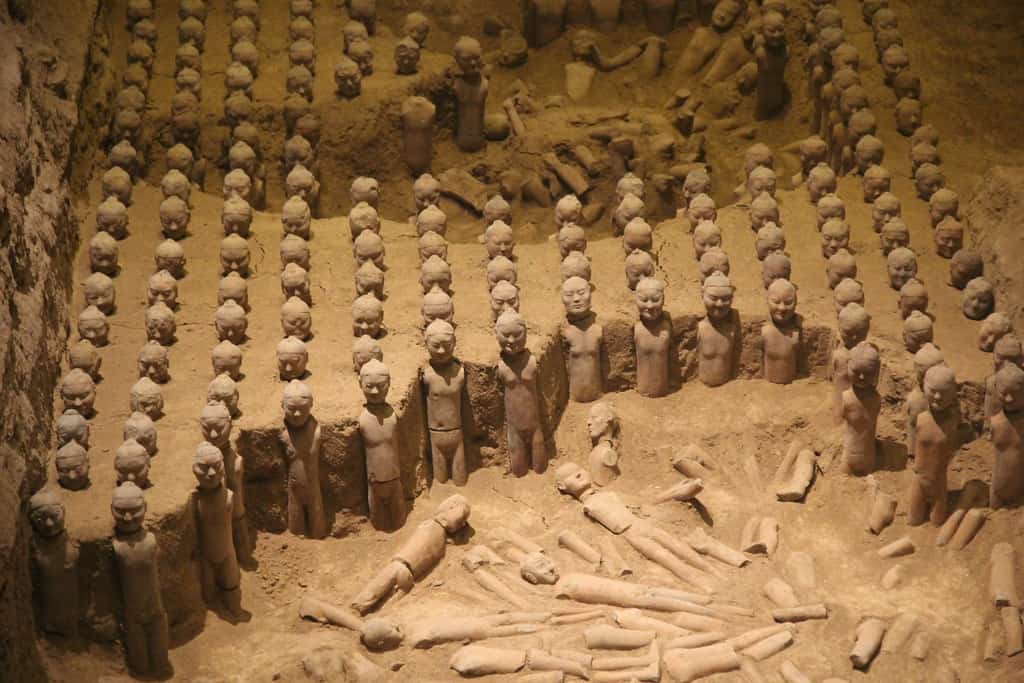
Say it with me, Han-Yang-Ling.
Also known as the “Han Museum of Yang,” it is the location of Emperor Jingdi of the Han Dynasty (202BC- 220AD) and his queen’s final resting site.
The emperor made a significant impact on his people’s lives, and he harnessed powers of peace and diplomacy rather than war.
The site was constructed between 188 BC and 141 BC in the northern part of Xi’an, and it can be considered one of the city’s lesser-known attractions.
Visitors will find two sections: the burial sites and the actual museum.
The 2,000 years old mausoleum features a particular layout that reveals a unique funerary system and culture very different from the Terracotta Warriors of the Qin Dynasty.
Visitors will also see around 50,000 mini-life-like pottery figurines that featured servants, eunuchs, and female cavalry, uncommon for that period.
As the most well-preserved imperial mausoleum of the Han Dynasty, guests will be able to explore 21 out of 81 pits inside, being one of the only few underground mausoleums in the country.
You can view the relics underground since the site has glass floors.
Visit the Hanyangling Museum to learn more about Han Dynasty.
Address: Weicheng District, Xianyang, Xianyang, Shaanxi, China
Routine is far more deadly than any daring endeavor. Discover dreamy destinations. Kick off your world travel by checking out our travel round the world guide. When traveling the world, you can’t skip the United States. Interested in a truly American adventure? Click here for the what are the best states to visit in USA?
Mount Huashan
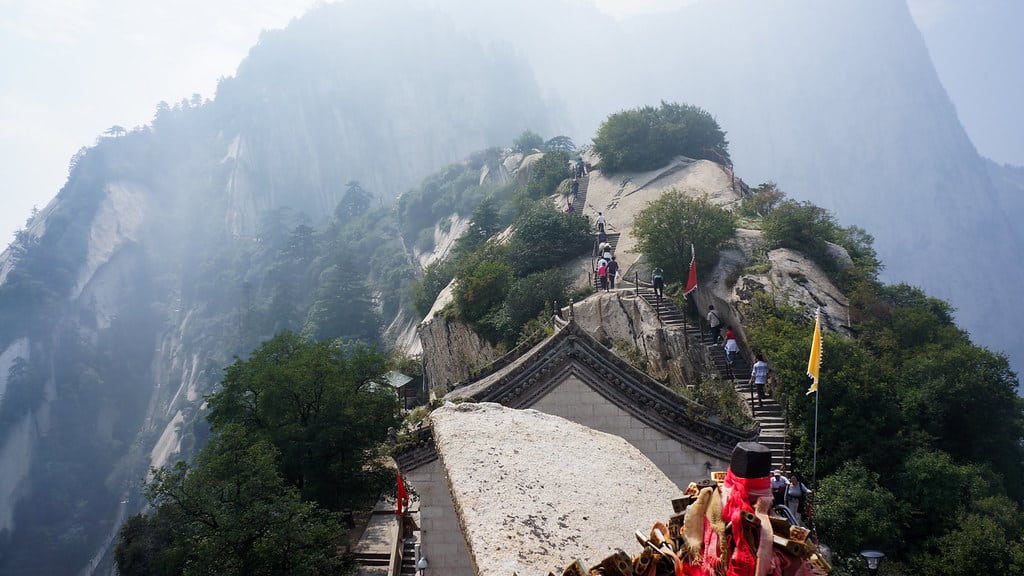
Put your hiking shoes on and hike up Mount Huashan!
Mount Huashan is not precisely in Xi’an city, but it’s only a 2-hour drive away, and hiking up will not disappoint.
In addition to the amazing views from the small and steep pathways, the towering mountainous region with its craggy cliffs is well-known.
Mount Huashan is renowned for being one of the “Five Mountains” in China, and it is regarded as the one with the most challenging hiking trail.
It has five peaks, and they all have their own particular charms: South Peak is the one where the altitude is at it’s highest.
Aside from West Peak’s majesty, which provides the greatest vistas of the morning sun, other notable peaks are North’s Cloud Terrace and Middle Peak’s Jade Lady.
In the past dynasties, monarchs of the Taoist religion made offerings to the deity of the mountain. They participated in Taoist activities at Mount Huashan, marking it a sacred location.
Hiking on the mountain, Huashan, is a prevalent activity among those who visit.
For years most who visit have taken the more efficient and also traditional way of walking up the mountain and descending through a cable-car route.
Visit the five beautiful peaks of Mount Huashan now.
Address: Mount Huashan, China
Muslim Quarters
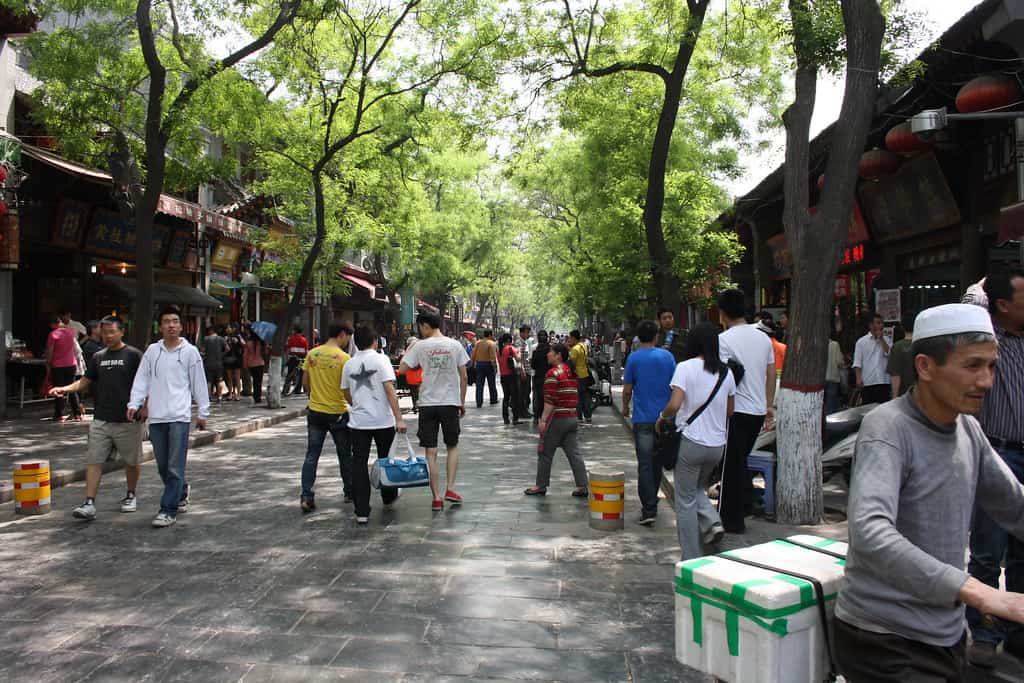
Check out what is there to see when you put two different cultures together in one place.
Located right in the middle of town, the Muslim Quarters is a must-see.
The Muslim Quarters, which is a place of residence of nearly 20,000 Muslims, comes alive at night when the community comes together to celebrate and mingle.
During the olden days, foreign diplomats and merchants came, married, and settled in the city.
Today, most inhabitants of the quarters descended from those said immigrants and formed a tight-knit community.
Tourists should surely visit the Muslim Quarter!
In addition to the Great Mosque, several mosques and marketplaces sell a variety of items.
Beiyuanmen Muslim Market, which is located just behind the Drum Tower, is a good choice after doing some sightseeing in the city center.
It has various Muslim-owned food stalls that offer various local delicacies.
Other Quarters’ highlights include the Hanguang Gate, Xicheng Gate Tower, City God Temple, and the Grand Mosque.
Immerse yourself in a mix of different cultures now.
Address: China, Shaanxi, Xi’an, Lianhu District
Shaanxi History Museum
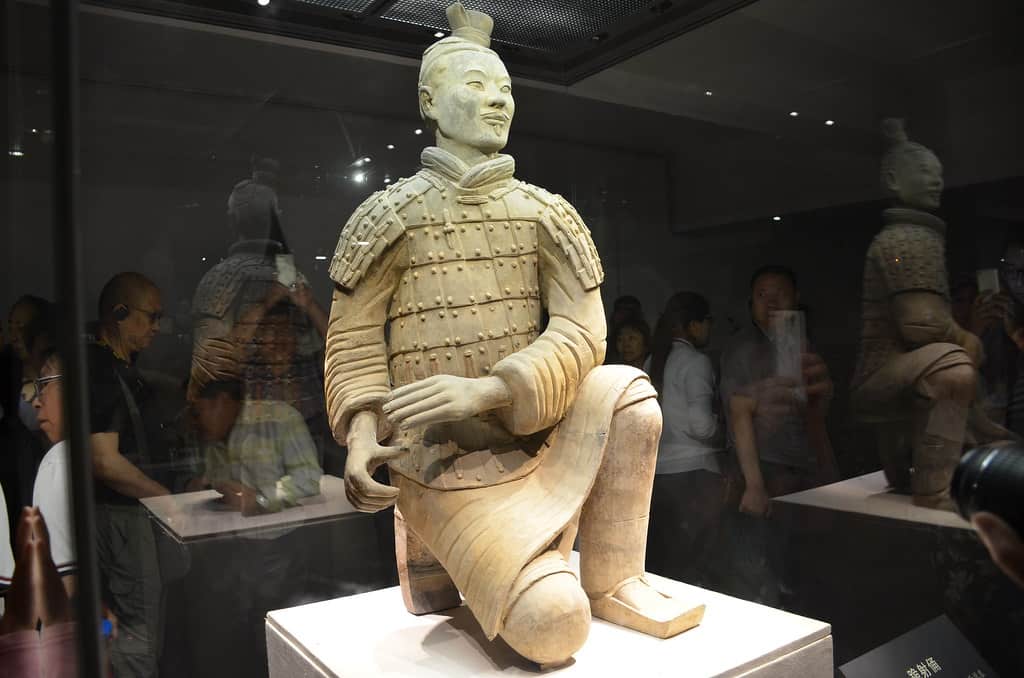
This one is for museum lovers!
This modern museum is the first of its kind in the country opened in China. The Shaanxi History Museum is regarded as ‘the pearl of ancient dynasties and house of Chinese treasures.
Also, it offers an overview of the country’s cultural practices and centuries-old history.
It opened in 1991; the museum has over 370,000 exhibits that date back to ancient times.
The museum’s architecture would give you a glimpse of what of the Tang Dynasty was like.
Inside, you would see a two-floored central hall surrounded by four halls for worship.
The exhibition hall of the Shaanxi History Museum is generally split into main groups, there are four of them. Permanent Exhibition, Preface Hall, Hall, Temporary Exhibition Hall, Tang Mural Exhibition Hall.
Don’t forget to check out the lion made of stone from the Shunling Tomb from the Tang Dynasty and the original four statues of the terracotta warriors on the ground floor.
Refresh your Chinese history now and visit the Shaanxi History Museum.
Address: 91 Xiaozhai E Rd, Yanta District, Xi’an, Shaanxi, China, 710064
Terracotta Army
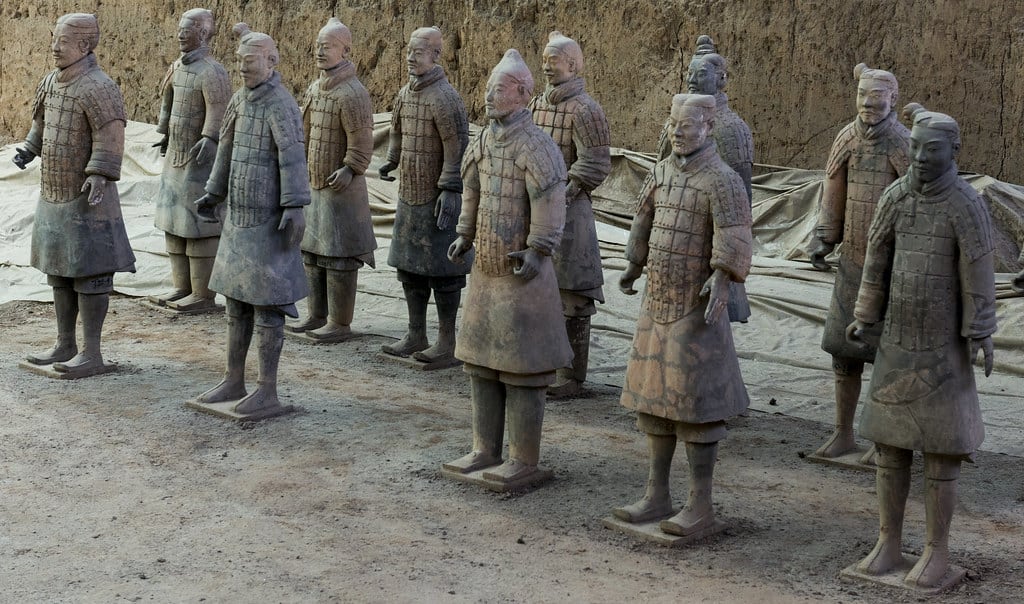
Are you an archeology buff? Discover the place that is included in a lot of history books.
The Terracotta Warriors in Xi’an, also known as the Terracotta Army and Horses.
It is an enormous assembly of life-size terracotta statues in the battle formations of the first emperor of unified Imperial China, Emperor Qin Shi Huang.
At this location, there are three separate massive underground rooms.
Emperor Qin Shi Huang’s voyage to the afterlife prompted the construction of the miniature army around 246 BC.
However, it wasn’t finished until 208 BC, two years after he died.
The army is exceptionally well-organized, and it was only found in 1974 by well-diggers.
Yellow dirt, a clay-like material discovered on-site, is used to make the sculptures.
It was completed after 40 years and the efforts of approximately 700,000 individuals.
Furthermore, the Terracotta Warriors is well-known for being one of the most significant archeological excavations of the 20th century.
Indeed, Terracotta Army is undoubtedly a must-see for those who visit Xi’an.
Learn more about Emperor Qin Shi Huang and check out the Terracotta Army.
Address: Lintong District, Xi’an, Shaanxi, China
Tang Paradise
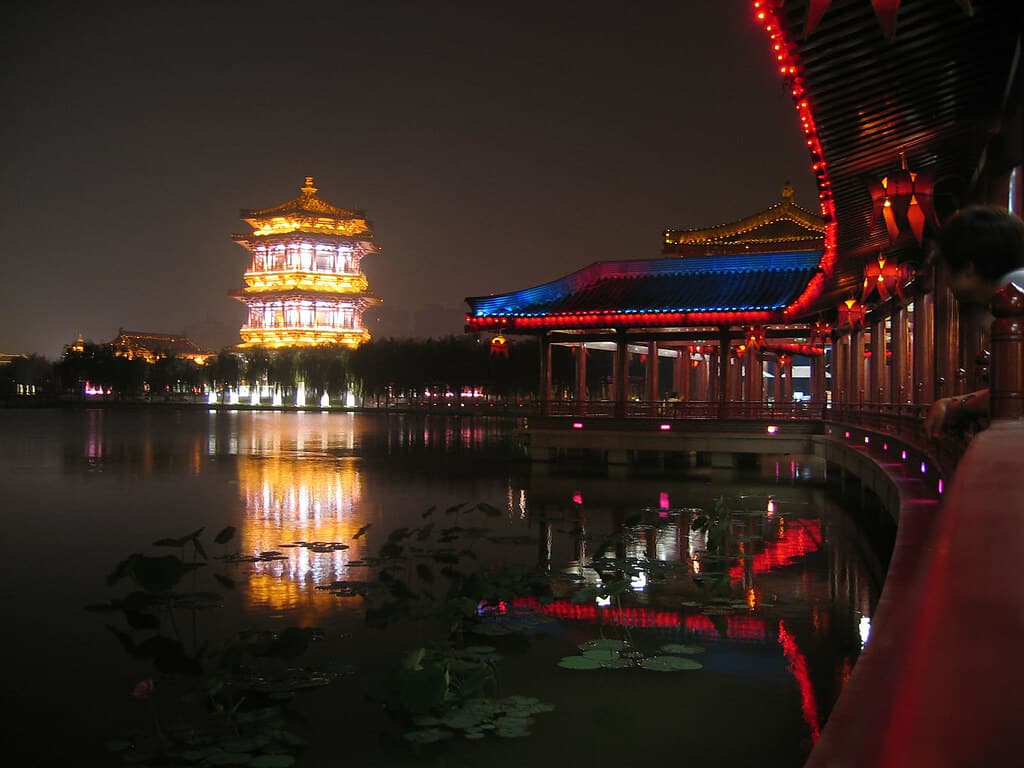
Who doesn’t want to experience a tiny slice of paradise?
Claiming to be the most prominent cultural theme park in China’s northwest region, the Tang Paradise is also the first royal-garden-like park to give an entire exhibit of the Tang Dynasty’s (618-907) culture.
Twelve scenic regions are distributed inside the site to provide visitors with the enjoyment of twelve cultural themes and a perfect exhibition of the grandeur, prosperity, and magnificence of the culture of the Tang Dynasty.
The park’s amazing designers have integrated almost everything that would represent the ways of the Tang Dynasty.
You’ll see a lot of poetry, songs and dances, food, the way of life, and even science, into every site integrating the cultural theme.
Many buildings at Tang Paradise indeed showcase almost all of the Tang Dynasty’s architectural types and characteristics.
Also, the park has establishments for relaxation and shows that feature songs and dances about that Dynasty’s civilization. Strolling here, you would be able to experience enjoyment, which gives you the feeling of being in a fairyland.
Visit the Tang Paradise for a surely unforgettable experience.
Address: 99 Furong W Rd, Yanta District, Xi’An, Shaanxi, China, 710061
Xi’an City Wall
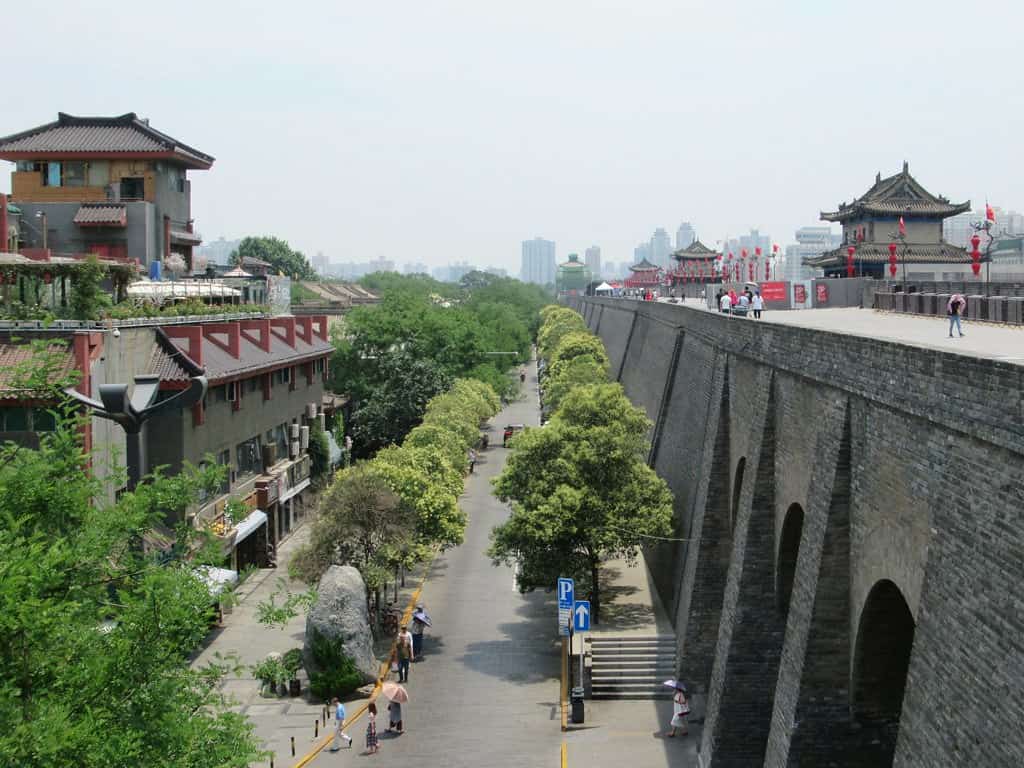
It’s not only Beijing that has a wall.
The Xi’an City Wall is China’s best-preserved city wall and one of the most massive ancient military defense systems globally.
Moreover, Xi’an was once a fortified city that was seven times larger compared to today’s city center.
It was built during the reign of Zhu Yuanzhang, the Ming Dynasty’s first emperor in 1370, as a way to defend the city.
When Emperor Zhu Yuanzhang captured Huizhou, Zhu Sheng, a hermit, advised the emperor to store an abundant food supply, build high walls to fortify the city, and unify the other states.
Its original structure was constructed using soil, quick lime, and glutinous rice extract.
The wall was later enclosed in brick. Though they have tried to rebuild it over the years, it still divides the city into inner and outer sections.
Visitors of the wall can stroll or rent a bike to admire the city from above.
It’s recommended to visit in the late afternoon for the best photographs!
You will see 98 flanking towers and watchtowers, the moat, horse passages, and even secret tunnels.
Be sure to stroll or cycle around the city walls on your next visit.
Do you need any more convincing that Xi’an China is worth a visit? Check out reasons to visit Xi’an, China, at least once in your lifetime here.
Address: Xincheng, Xi’an, China, 710003

